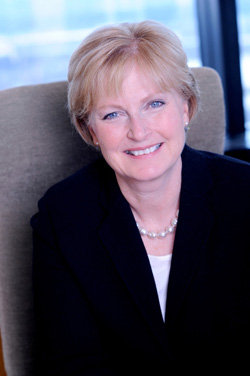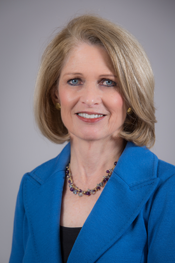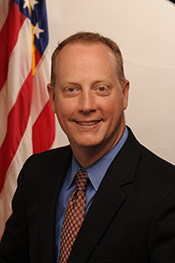Auto logout in seconds.
Continue LogoutThis interview with Paul Rothman, CEO of Johns Hopkins Medicine, was conducted by Eric Larsen, managing partner, and condensed by Amanda Wolfe, senior director.
Question: Dr. Rothman, you've had a distinguished career as a molecular immunologist and have held various academic and administrative leadership roles throughout your career, now culminating in leading world-renowned Johns Hopkins Medicine. As you reflect on your career, what were some of your early influences?
Paul Rothman: I grew up in New York City, in the public school system. I was a high school senior when I read a book called, "Lives of a Cell," by Lewis Thomas, who at the time was the president of Rockefeller University. That book, a series of essays around science and medicine, really sparked my excitement about doing medical science and biomedical research.
It also framed my view on why it's important to do basic research. Over the long term, understanding the fundamentals of disease enables us, as a society, to treat diseases more definitively and less expensively.
Q: You're the second CEO of Johns Hopkins Medicine and the 14th dean of the medical school. What prompted you to transition from research and care provision to the administrative side of health care?
Rothman: It all has to do with how you think you can make an impact.
When I ran a lab and I was doing science, I felt I was making a difference. Now, as a leader in a large academic health institution, it is my privilege to help facilitate the work of many dedicated scientists—giving them the resources and supports they need to produce work that will impact countless patients in all areas of medicine.
When I first got to Johns Hopkins, I described it as a dream job, because it's a place that is so mission driven to improve health in the community, through research, education, and patient care. It's really an honor to be asked to ensure that institution remains great and to have this opportunity to help shape the future of medicine.
Q: I understand that you continue to teach immunology to first-year medical students, despite your busy schedule.
Rothman: It's a guilty pleasure to teach medical students, because there's a lot of other things I need to be doing for the institution, but it's one of the real joys I have in the job.
I also try to have lunch with assistant professors on a monthly basis. And I have dinners with med students. In these positions you get very busy, but you have to take time to understand why you're doing all this work and how it's impacting people at all levels.
Q: Johns Hopkins has 126-year history and is perennially recognized as being one of the most outstanding clinical institutions in the world. And yet, given the profound environmental and industry shifts taking place, there is the need for constant 'self-disruption,' even in a place as storied as Johns Hopkins. How do you think about the stewardship of that history and push toward the next stage at the same time?
Rothman: I think about things like that a lot. From an external view, you could see Hopkins Hospital as a storied institution that's stagnant and conservative. Or you could think of Hopkins as an institution that has been successful because it continuously innovated.
How hospitals are becoming innovation hubs
Hopkins is Hopkins because we've led with innovation. If we weren't continuously innovating over that entire time period, we would not be who we are.
Q: Hopkins has been the top-ranked hospital in the country, for something on the order of 22 of the last 25 years, with a slight dip last year. How much stock—if any—do you put in the rankings?
Rothman: We went from number one to number two, to number one to number three. We're going to be number one again; we have no doubt about it. That's because we look at those rankings and ask, 'What are they telling us about ourselves and how we can improve?'
People here are very proud to be at the top, no matter the exact position. But at the same time, we take seriously what these rating systems tell us about ourselves.
Population health and value-based care
Q: Let's pivot a little bit. CMS awarded Johns Hopkins a three-year, $19.9 million grant to focus on care for local residents. As I understand it, life expectancy is markedly lower for residents in the seven ZIP codes that are most proximate to your two downtown hospitals. How are you attacking that issue?
Rothman: We have some of the best people in the world who study health care discrepancies. It's not only Johns Hopkins School of Medicine, but also our school of public health and school of nursing, our business school, and our engineering school and the applied physics lab. One of the strengths of being a part of a university like Johns Hopkins is that we can leverage all those resources.
Related
What CMS's value-based insurance model means for population healthWhen we started to work on these issues, we tried to engage the local population, but we didn't do an effective job. So we asked churches and other community groups, "How can we engage the population around here in their own health care?" And what they said was, "You need us to help you."
So we hired and trained people in the seven ZIP codes around our Bayview and Hopkins Hospital campuses to be community health care workers. As a result, we've been able to engage a whole bunch of people in their own health care. It's been a great learning experience for us.
Q: What are some of the challenges of running a program like that?
Rothman: The truth is, our payment systems need to reform, to recognize that we can't just sit here in these big hospitals and wait for people to get sick and come to us. We have to learn how to reach out, and the payment system is starting to adjust to that new reality and find ways to reimburse that important work.
I think that's going to be one of the biggest changes in health care we'll see in the next decade or two—a transition toward payment systems that allow you to build programs to intervene early, before people get sick, to keep them healthy.
From our archives: More on Johns Hopkins
Q&A with Johns Hopkins Bayview Health Center
Q: When I talk with other hospital leaders, I feel a palpable sense of frustration at the pace with which the payment system is adapting. Is that your perception, too?
Rothman: So I actually don't agree with you, and that's because I think most of these changes put more risk on the delivery system, and the delivery system first needs to build the infrastructure to take on that risk. If you look at most big hospitals or health systems, they don't have robust population health programs in place.
I'm in favor of a slow movement, a thoughtful movement, where you can gradually move the reimbursement system along and allow health care delivery systems to build up their population health competences.
Forging partnerships
Q: Let's shift focus from the community you serve here in Baltimore and beyond, to an international view. There's been a lot of activity around very pedigreed American clinical institutions going abroad, and some have had some significant, well-documented struggles. Johns Hopkins has been successful in establishing an international presence. What can you tell me about the strategy there?
Rothman: Right now, we do research in 108 countries, and we run hospitals or health systems in 20 countries. Our biggest joint venture is with Saudi Aramco and Saudi Arabia.
When we go globally, it's because we think we can do something to improve the health of a community. Johns Hopkins Medicine is a mission-driven organization, and we only do things that are driven by our mission. When asked by a country or a foreign hospital to go work with them, we ask them, 'What is your community need, and how can we help you meet that need for your community?' It will be different in Trinidad and Tobago, to Brazil, to Chili, to India, to Turkey, to Abu Dhabi, to Saudi Arabia. We look carefully at what expertise we have at Johns Hopkins that can help them. We look for an alignment of mission.
Q: There's also been a marked increase in partnerships for you domestically. I understand you're working with Allegheny Health Network and Kaiser Permanente. I'd love for you explain a little bit of your approach to these partnerships.
Rothman: So I hate to be repetitive, but it all begins with mission.
Just as described how we evaluate potential international collaborations, it's the same thing here, and it starts with the desire to help a community. We want partners who share our values and mission. We started talking to Allegheny and Highmark about their needs to improve cancer care in their community. With Kaiser, we've talked about bringing our expertise together to do some clinical research.
The strategic thinker's guide to partnerships and affiliations
Focusing on staff and training physicians of the future
Q: I read an article in your Johns Hopkins magazine on staff burnout, especially among nurses. Another recent article talked about how internal medicine practitioners are the most disillusioned of all specialties. There does seem to be a wide sense of exhaustion and frustration among health care professionals, especially given how turbulent the industry is right now. How do you think about that?
Rothman: That's actually something that we think about a lot. When we devised our strategic plan, the number one pillar was people. Hopkins is only great because of the people who work here and learn here, so it's important to use to keep them satisfied and engaged. We're doing a lot of things to support our employees, and I think a key step is going to be harnessing technology industry wide.
Over the next decade, we need technology to make it easier for us to take care of people, rather than presenting an added burden.
Q: You've also been published, Dr. Rothman, on this concept of 'humanistic medicine.' How do you instill that concept into the medical school curriculum, as you train the next generation of physicians and physician leaders?
Rothman: When I trained, there were no personal computers. I began before MRIs, and CTs were nascent. Now, there is some very powerful technology to help us take care of patients, but with that technology has come, sometimes, a separation of the patient from the physician, a loss of human contact.
Why one medical school admits liberal arts students—without making them take the MCAT
When we think about building a compassionate workforce, we begin with who we're recruiting into medicine. We think about it holistically, asking, 'Who joins our staff? Who do we recruit to be nurses and physicians? Which medical school applicants are we accepting?' Throughout training, we try to implant the idea that technology is a resource to be leveraged, not a resource to come between you and the patient. And we place a strong emphasis on getting to know patients as individuals, with different backgrounds, fears and goals.
Q: You've discussed some of the consequences of grant funding and Nobel Prizes being awarded to more-established researchers instead of younger scientists. I'd be curious to hear more about that.
Rothman: This problem derives from the issue of flat NIH funding for biomedical research over the past decade. As the money's gotten tighter, what you find is that senior people can more effectively compete for the grants because they have established track records. With a limited pool of funds, it's hard to give a grant to a junior person who is unproven. Thus, the average age of a person with NIH funding has gone from 38 to 45 over a decade.
Related
JAMA: U.S. lead in medical research is at riskThe reason we're concerned is that we don't want to lose those energetic, creative young scientists who have found it difficult to get grants. We're providing funneling more resources toward our junior people, such as increased mentoring and pre-review of grant applications, to help them compete.
I think NIH is very focused on this pipeline issue, too. They understand how devastating it would be to have a dearth of good people 10 or 20 years from now.
Q: On a similar note of research funding, you were just named to serve on the board of Merck. It seems there isn't a single cancer drug that's come out in the last 18 months that doesn't have a price tag of less than $120,000 a year. I hear a lot of perspectives on it, but not a lot of solutions, and I'd be curious what your view is.
Rothman: I'll walk through how I think about hepatitis C drugs. When companies price their drugs, they think about what the lifetime treatment expense would be for a chronic illness. So for hepatitis C, its $150,000 or $200,000 over a person's lifespan.
Drug companies say, 'Well, if we can cure this person and eliminate the need for a lifetime of drugs, let's charge them half that amount.' And for the health care expenditure for the country, in the long term, that's a good thing. The problem is that a single payer is taking responsibility for that expense at a single point in time.
A place like England, or anywhere with a single-payer system, has an easier time grappling with that. There, you can at least have a discussion about the drug's value to the system. Because of our payment system here, it's hard to even have that discussion.
At some point, I think we'll be able to ask, 'What is the value of that drug to America and our American health care system, and is the cost proportionate?'
Looking to the future
Q: What does the future look like for Johns Hopkins?
Rothman: We're in year three of our five-year strategic plan. We wanted to ensure that the plan was patient and family centered. We also wanted to make sure we're the safest in health care. And we want to develop a truly integrated system. For us, it all begins with innovation. We will only be successful if the integrated system we build provides innovative care at every level at the same time we're becoming more efficient and effective. That's where we're going.
Get more lessons from the C-suite
See the Daily Briefing's archive of must-read interviews with other top hospital and health system leaders, including:
 How a CEO's cancer diagnosis changed this health system
How a CEO's cancer diagnosis changed this health system
Mary Brainerd, president and CEO of HealthPartners, talks about her system's efforts to "out-MinuteClinic MinuteClinic" and its experience as a provider, insurer, and pharmacy. Read our interview with Mary.
 Yale New Haven CEO's journey from unit secretary to the C-suite
Yale New Haven CEO's journey from unit secretary to the C-suite
Marna Borgstrom, president and CEO of Yale New Haven Health System, talks about her approach to partnerships, the future of academic medical centers, and how a deal with Tenet fell through. Read our interview with Marna.
 How the government's chief medical officer views the health care industry
How the government's chief medical officer views the health care industry
Patrick Conway, CMO and acting principal deputy administrator at CMS, talks about the pace of change in health care today, how a new president could affect delivery system reform, and more. Read our interview with Patrick.
Don't miss out on the latest Advisory Board insights
Create your free account to access 1 resource, including the latest research and webinars.
Want access without creating an account?
You have 1 free members-only resource remaining this month.
1 free members-only resources remaining
1 free members-only resources remaining
You've reached your limit of free insights
Become a member to access all of Advisory Board's resources, events, and experts
Never miss out on the latest innovative health care content tailored to you.
Benefits include:
You've reached your limit of free insights
Become a member to access all of Advisory Board's resources, events, and experts
Never miss out on the latest innovative health care content tailored to you.
Benefits include:
This content is available through your Curated Research partnership with Advisory Board. Click on ‘view this resource’ to read the full piece
Email ask@advisory.com to learn more
Click on ‘Become a Member’ to learn about the benefits of a Full-Access partnership with Advisory Board
Never miss out on the latest innovative health care content tailored to you.
Benefits Include:
This is for members only. Learn more.
Click on ‘Become a Member’ to learn about the benefits of a Full-Access partnership with Advisory Board
Never miss out on the latest innovative health care content tailored to you.
